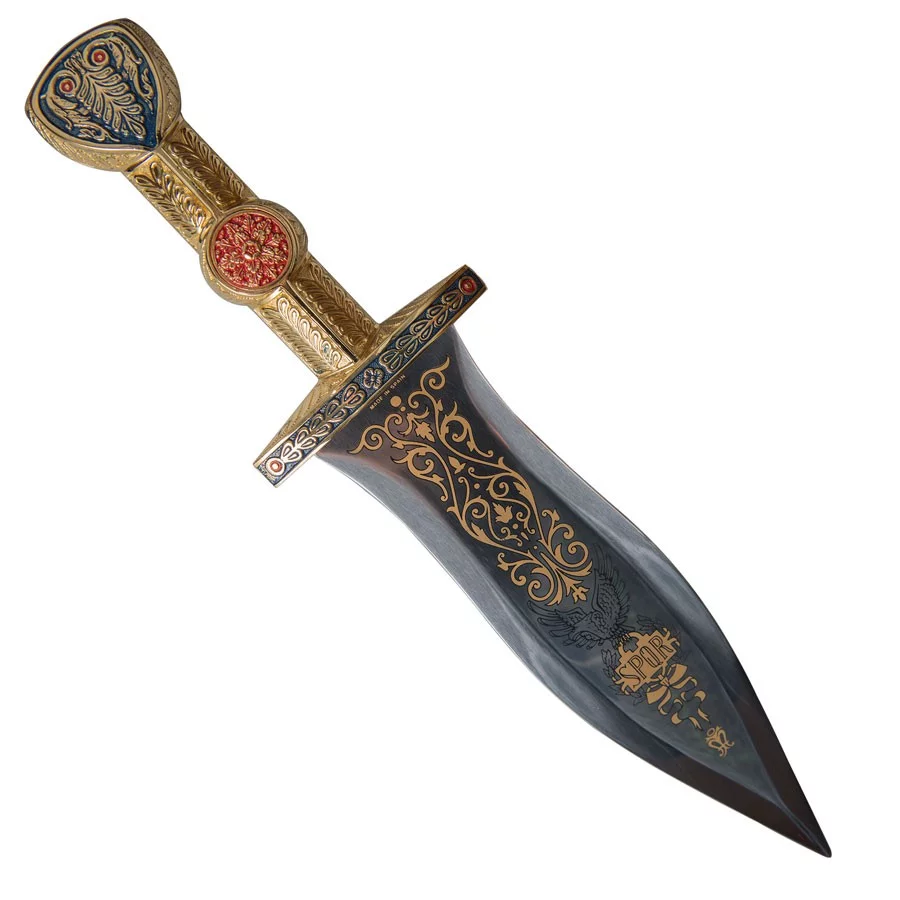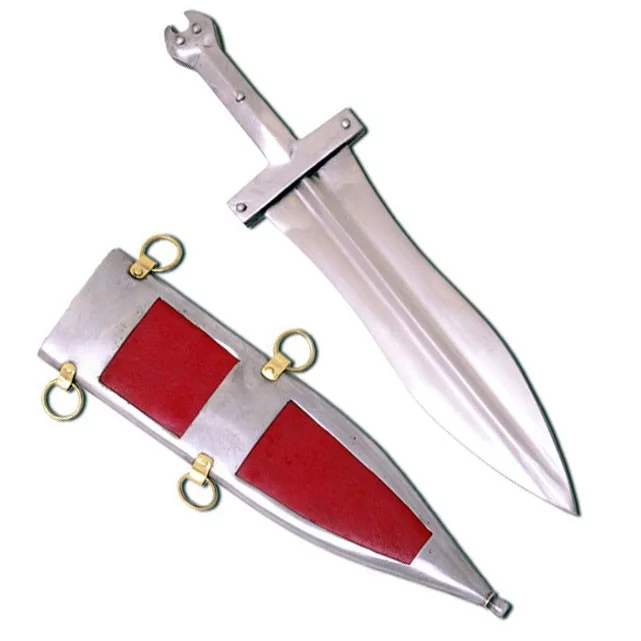What is the Roman Pugio?
The Roman pugio is an emblematic dagger of the Roman army, whose use is framed in the rich military history of Rome. This instrument was not only effective in combat but also held symbolic and aesthetic significance for the legionaries who carried it. Below, we will delve deeper into the origin, characteristics, and function of the Roman pugio.
Origin of the Roman Pugio
The pugio has its origins in the ancient cultures that inhabited the Iberian Peninsula, specifically among the Celtiberians. It is believed that the Romans adopted this weapon, known as the double-discoidal dagger, during the Celtiberian Wars in the 2nd century BC. This influence allowed the dagger to be integrated into Roman armor and military equipment, enhancing its versatility on the battlefield.
Characteristics of the Roman Pugio
- Design and Size: The pugio is characterized by being a double-edged dagger that generally exceeds 20 centimeters in length. Its pistiliform shape is typical, although specimens with triangular blades have been found, especially in the area of the British Isles.
- Central Ridge: The blade of the pugio features a central ridge that provides greater strength and rigidity, facilitating use in combat.
- Decoration: Both the sheath and the handle of the pugio often include elaborate designs, reflecting the status of the soldier who carried it as a symbol of prestige.

Function of the Roman Pugio
The main purpose of the Roman pugio was to act as an auxiliary weapon in combat situations. Thanks to its compact design, the pugio could be used to stab and penetrate armor, such as chainmail. It is considered that, although some historians argue that the pugio had a symbolic value, its actual use in critical moments when the gladius was not at hand is the most accepted interpretation.

Conclusion
The Roman pugio was not only a useful tool in warfare contexts but also represented the culture and status of the legionaries. Its evolution and adaptation over the years make this weapon a fundamental part of Rome's military history.
















